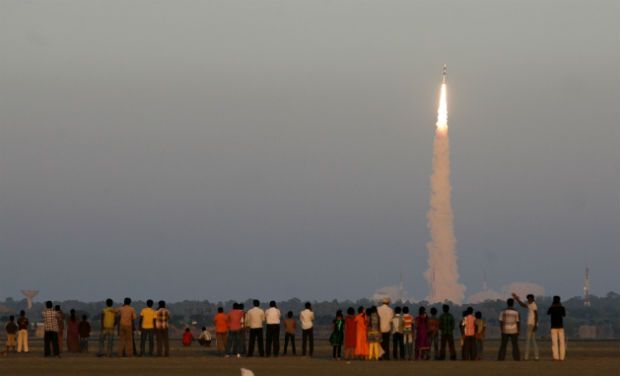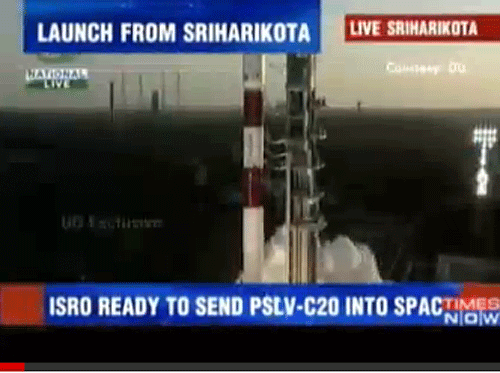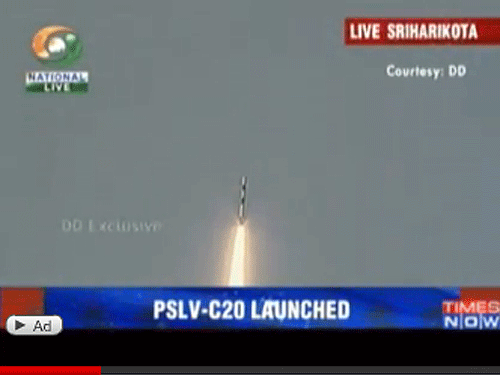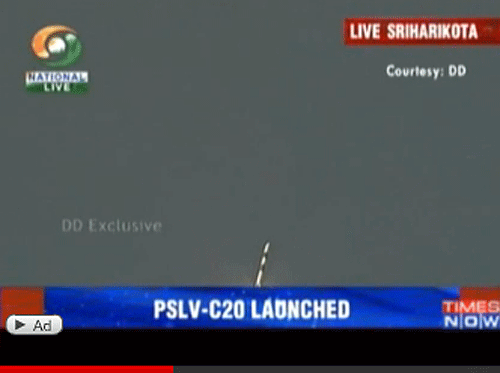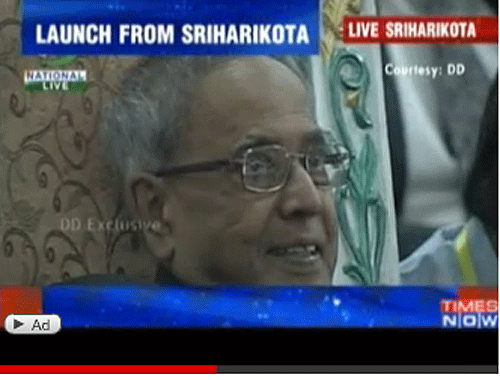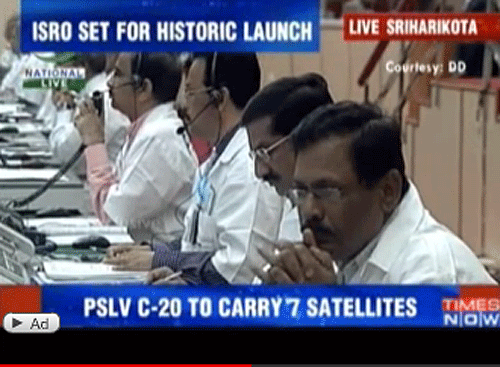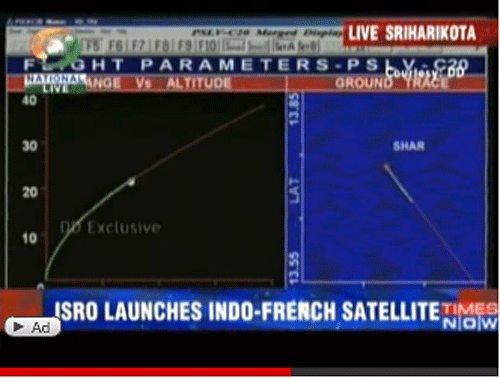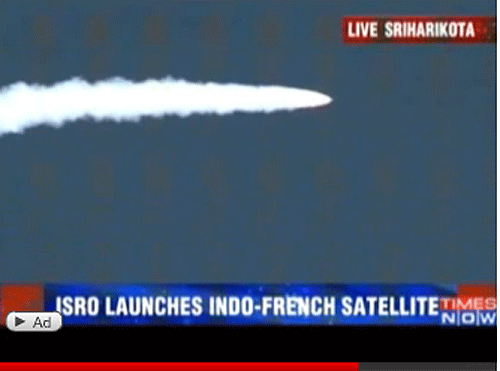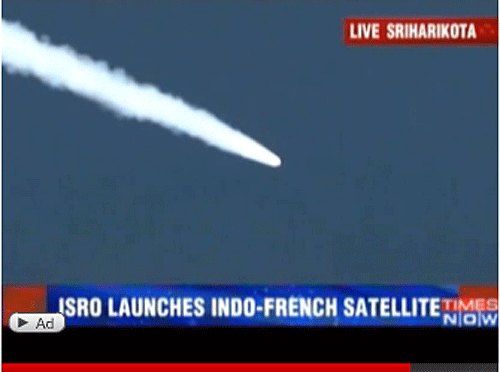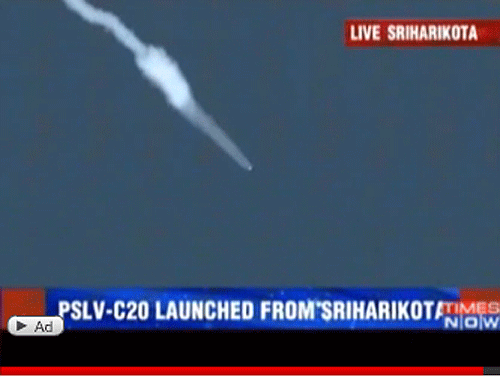.
11.02.2013
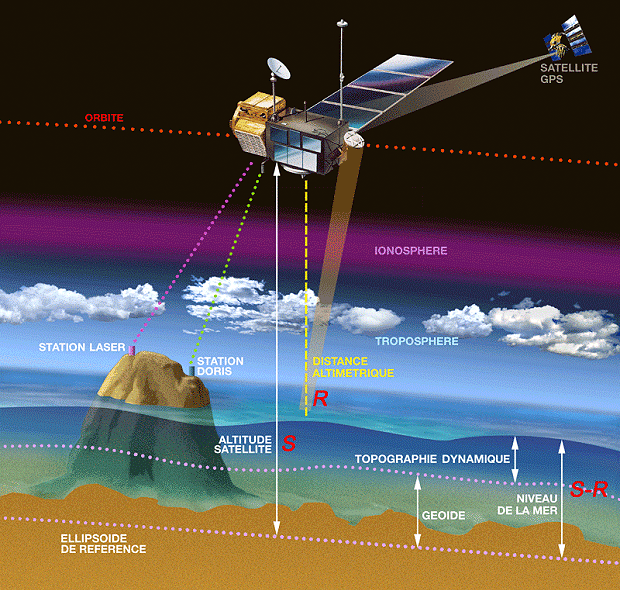
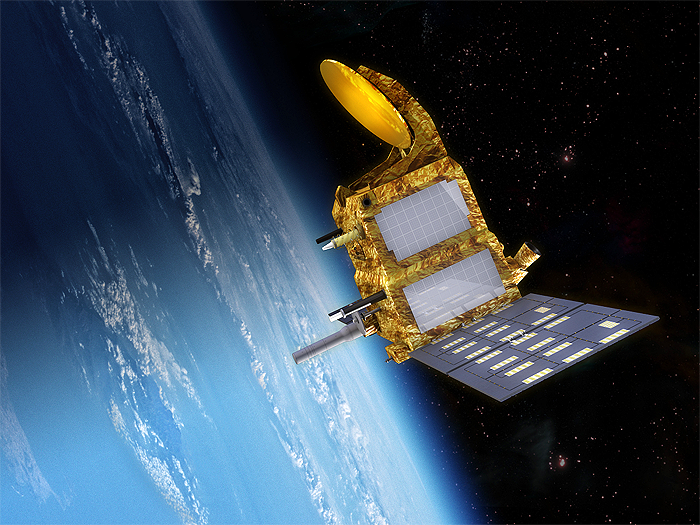
India to launch seven satellites on February 25
Chennai: The Indian space agency will February 25 put into orbit seven foreign satellites including an Indo-French collaborative satellite SARAL and thus earn much wanted revenue.
"The launch of the Polar Satellite Launch Vehicle-C20 (PSLV-C20) is currently fixed for February 25 evening," sources in the Indian Space Research Organisation (ISRO) said.
"The rocket will blast off from the Sriharikota rocket launch centre (around 80 km from here) carrying seven satellites, totally weighing around 700 kg," a source in ISRO said.
According to ISRO, the rocket is expected to escape the earth's gravitational force at around 6 pm and inject the satellites in sun synchronous orbit (SSO) at around 785 km.
Officials said that assembly of satellites began on Thursday afternoon and is expected to be completed by Friday night.
After mating the satellites with the rocket, a full system check - rocket and satellites - will be carried out before fixing the heat shield, the protective gear that safeguards the satellites against damages when the rocket crosses the atmosphere.
The launch window will be open on February 22-25. During the 59 hour countdown, the systems will be checked and the rocket will be fueled.
Speaking about SARAL (Satellite for ARGOS and ALTIKA), Indian officials said the French gave the two payloads - ARGOS and ALTIKA) while ISRO provided satellite bus (satellite frame) and built the satellite.
"The data generated by SARAL will be shared by France and India whereas the other five satellites would be launched on commercial basis," an ISRO official said.
The SARAL will carry an Altimeter (ALTIKA) for studying the sea surface heights and ARGOS payload, which is a satellite based data collection platform.
Interestingly, PSLV-C20 will sling into orbit two Canadian satellite NEOSSat (Near Earth Object Space Surveillance Satellite), the world's first space telescope designed by Canadian Space Agency (CSA) and Sapphire satellite built by MacDonald, Dettwiler and Associates (MDA).
According to CSA, the satellite NEOSSat will detect and track asteroids and satellites circling the globe every 100 minutes and scanning space near the Sun to pin point otherwise almost invisible asteroids.
The satellite will also be useful in tracking resident space objects including space debris.
On the other hand Sapphire will look for resident space objects that includes functioning satellites and space debris circling between 6,000 km and 40,000 km above the earth.
The other four satellites to be carried by PSLV-C20 are BRITE and UniBRITE (both Austria), STRAND (Britain) and AAUSAT (Denmark).
Quelle: ISRO
.
Update: 22.02.2013
.
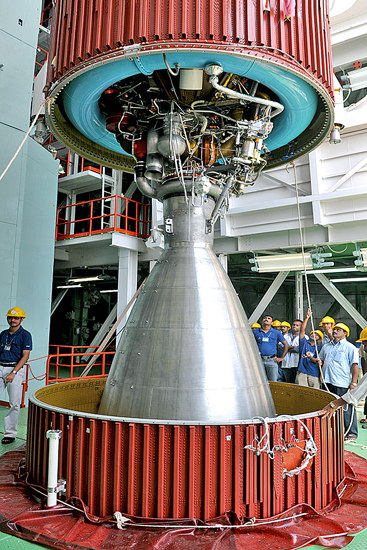
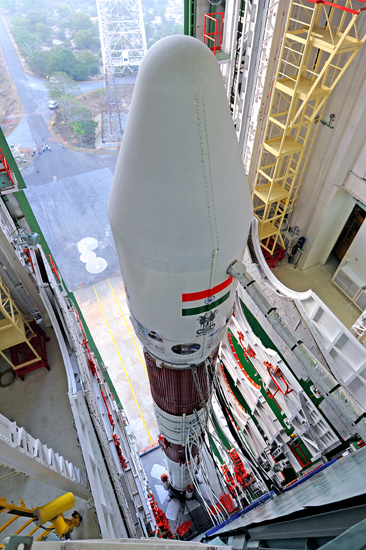
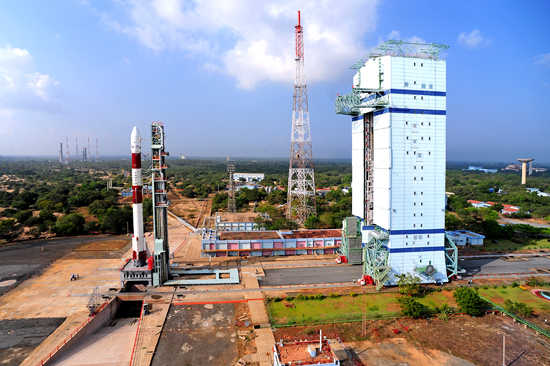
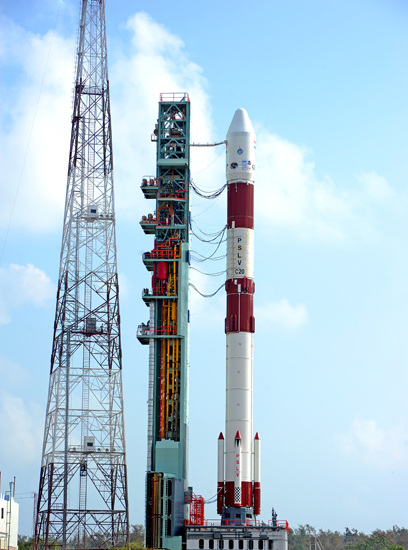
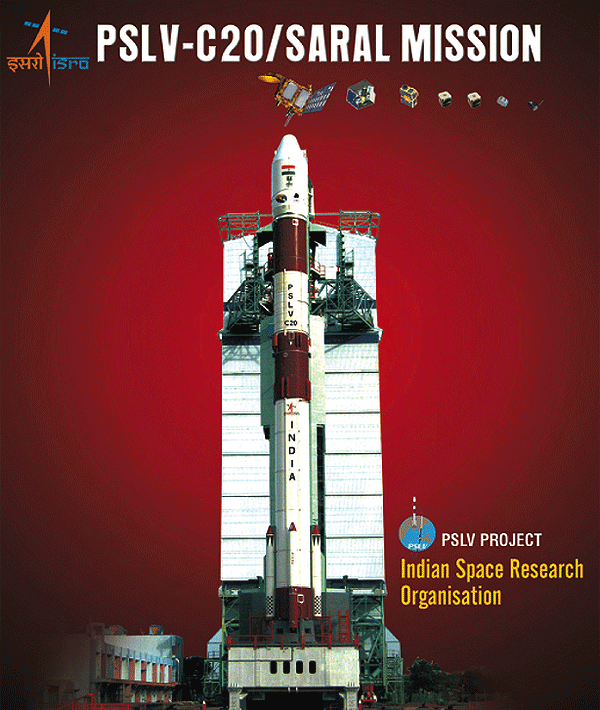
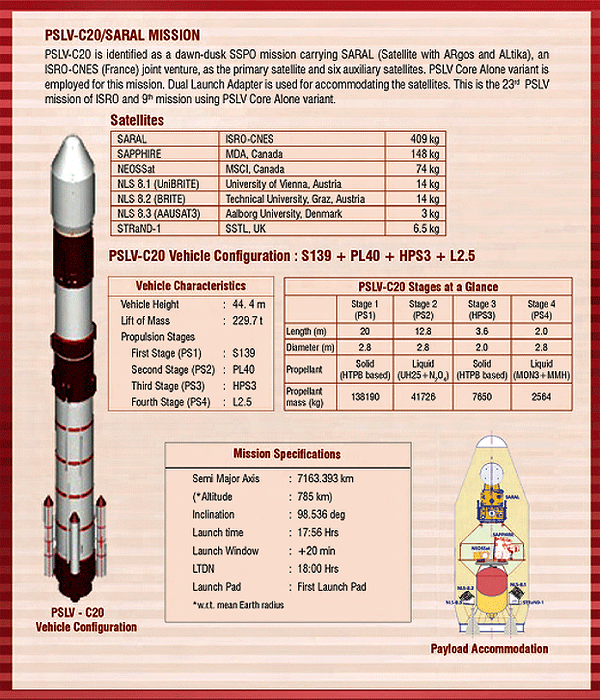
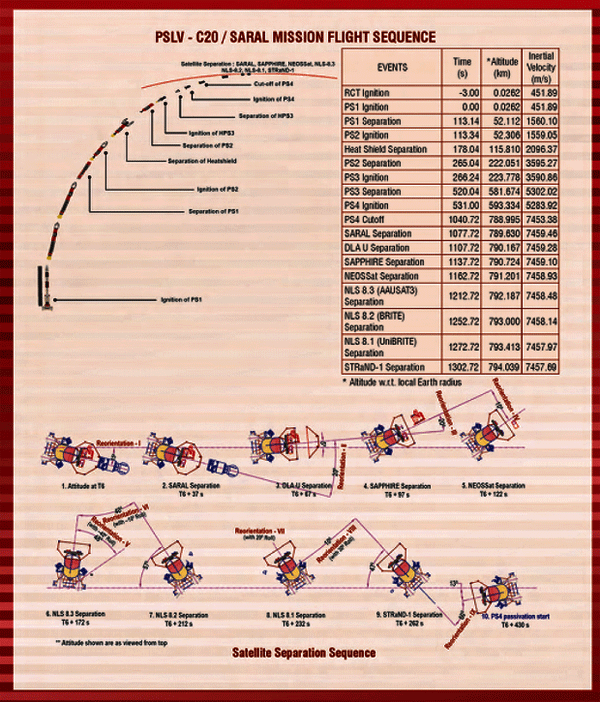
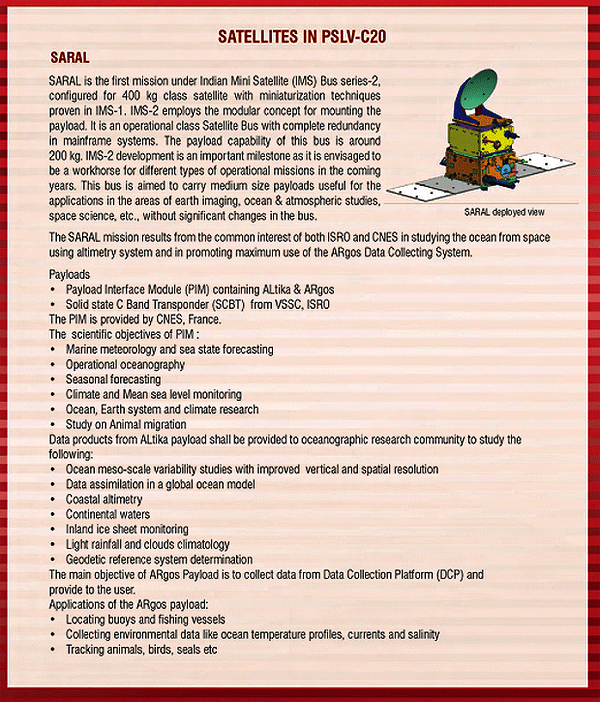
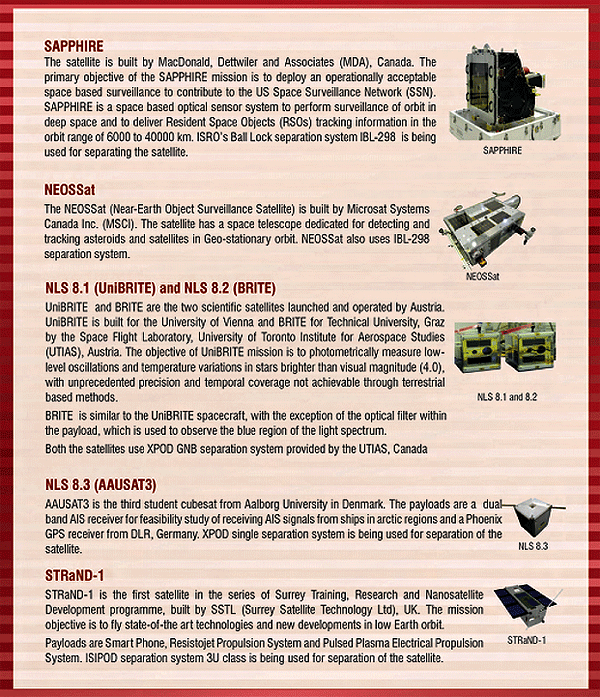
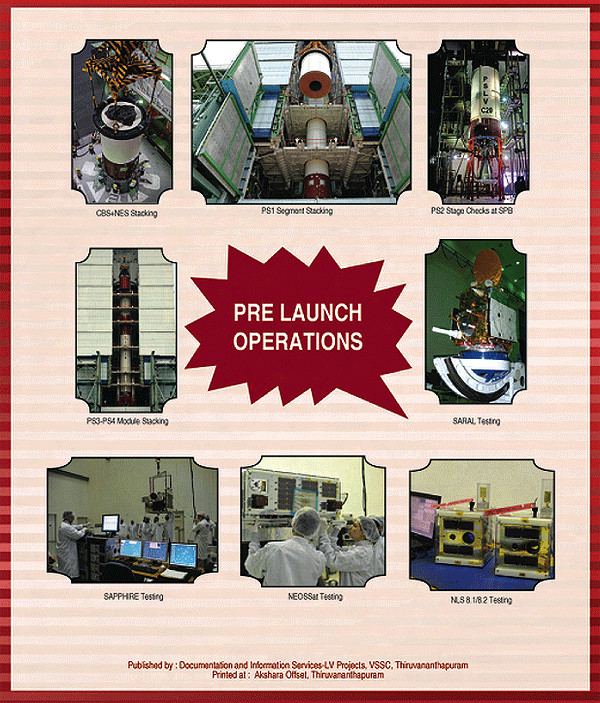
.
Update: 24.02.2013
Ahead of Monday’s launch of Indo-French satellite Saral (Satellite with ARgos and ALtika) and six small spacecraft, scientists began a 59-hour countdown at the Sriharikota launch port at 6.56 a.m. on Saturday.
The PSLV-C20 rocket will lift the satellites into the orbit at 5.56 p.m. It will be the second highest number of satellites to be flown on a PSLV. In April 2008, it put in orbit 10 satellites, including the national Cartosat-2A, on the PSLV-C9 rocket.
The Launch Authorisation Board cleared the mission after reviewing a ground ‘rehearsal’ at the Satish Dhawan Space Centre, according to the Indian Space Research Organisation (ISRO).
Saral weighs around 400 kg and will study ocean surface and the environment using the two devices — ARgos and the ALtika — band altimeter to measure heights.
France’s space research agency CNES has provided the two primary devices and ISRO is responsible for building and launching the spacecraft as per an agreement signed in February 2007 between the two governments.
C20 is the 23 mission of the indigenous PSLV and has been configured in a ‘core-alone’ or bare-bones format without solid strap-on motors. ISRO said this would be the ninth core-alone flight of a PSLV.
Of the six small experimental payloads it will fly for a fee, two each are from universities in Canada and Austria and one each from the U.K. and Denmark.
ISRO initially planned this launch for the memorable date of 12-12-12. However, its officials said it was postponed to complete tests both here and in Sriharikota.
Quelle: THE HINDU
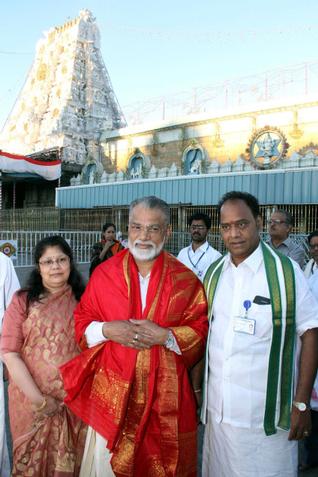
All arrangements are made for the visit of President Pranab Mukherjee to the Satish Dhawan Space Centre (SDSC) at Sriharikota here on Monday to witness the launch of PSLV C-20/SARAL Mission, which is aimed at putting seven satellites in orbit.
The Polar Satellite Launch Vehicle (PSLV) C-20 is scheduled to blast off at exactly 5.56 p.m. from the first launch pad of the spaceport.
It is intended to put the Indo-French satellite SARAL along with six other commercial satellites into the sun-synchronous orbit.
The 59-hour countdown progressed normally on Sunday when preparations for 2nd stage propellant filling and withdrawal of the mobile service tower were under progress by evening. Dr. K. Radhakrishnan, Chairman of Indian Space Research Organisation (ISRO), arrived at Sriharikota to monitor the countdown for final launch.
SDSC director M.Y.S. Prasad, PSLV project director Kunhikrishnan, Vikram Sarabhai Space Centre director S. Ramakrishnan and directors of other ISRO centres checked the launch vehicle and the fuel filling operations.
This is the 23rd mission for the PSLV in which the Indo-French joint venture SARAL satellite will be put in orbit for the purpose of oceanographic studies. PSLV C-20 will have a lift-off mass of 229.7 tonnes and it would be 668.5 kgs and 44.4 metres tall.
Built by ISRO, the SARAL is a 410-kg satellite with payloads as Argos and Altika of French space agency to help in oceanography studies. The mission is intended to carry six other smaller satellites belonging to Canada (2), Austria (2), Denmark and UK (1 each).
In view of the President’s visit, security arrangements were tightened around Sriharikota. Andhra Pradesh Chief Minister N. Kiran Kumar Reddy will receive the President at Chennai airport on Monday afternoon and accompany him to Sriharikota.
Quelle: The Hindu
.
Update: 25.02.2013 / 20.00 MEZ
World’s first “phonesat”, STRaND-1, successfully launched into orbit
STRaND-1, a nanosatellite carrying a smartphone, has successfully launched into Space from India today.
- STRaND-1 will fly the world's first smartphone in orbit and is the UK’s first CubeSat launched.
- The satellite flies a Google Nexus One smartphone, a new Linux-based high-speed processor and attitude & orbit control system, and two novel propulsion systems (8 pulsed plasma thrusters and a water-alcohol propulsion system).
- STRaND-1 is a training and demonstration mission 3U CubeSat (10cm x 30cm) weighing 4.3 kg, developed by the Surrey Space Centre and Surrey Satellite Technology Ltd.
Launched into a 785km Sun-synchronous orbit on ISRO’s PSLV launcher, the spacecraft is an innovative 3U CubeSat weighing 4.3 kg and is the world’s first “phonesat” to go into orbit, as well as the first UK CubeSat to be launched. Developed by a team from the University of Surrey’s Surrey Space Centre (SSC) and Surrey Satellite Technology Limited (SSTL), STRaND-1 is a training and demonstration mission, designed to test commercial off-the-shelf technologies in space.
Professor Sir Martin Sweeting, SSC Director and also Executive Chairman of SSTL, commented “STRaND-1 from SSC and SSTL is an example of the real synergy of academic research linked to commercial development and exploitation that is the hallmark of Surrey. This mission is a fantastic achievement and a great tribute to the hard work of the engineers involved. The UK’s first nanosatellite SNAP-1, also built by SSC & SSTL and launched in 2000, was the world’s most advanced nanosatellite at the time – STRaND-1 continues that story with the latest technologies available to us in 2013.”
Sir Martin added: “This launch is SSTL’s first with ISRO, and I am looking forward to exploring opportunities for further launches and a wider collaboration on space projects in the future.”
During the first phase of the mission, STRaND-1 will be controlled by the satellite’s attitude control system and a new high-speed linux-based CubeSat computer. During phase two the STRaND-1 team plans to switch many of the satellite’s in-orbit operations to the smartphone, a Google Nexus One which uses the Android operating system, thereby testing the capabilities of many standard smartphone components for a space environment. The smartphone has also been loaded with a number of experimental ‘Apps’, some serious and some just for fun.
STRaND-1 is flying innovative new technologies such as a ‘WARP DRiVE’ (Water Alcohol Resistojet Propulsion Deorbit Re-entry Velocity Experiment) and electric Pulsed Plasma Thrusters (PPTs); both ‘firsts’ to fly on a nanosatellite. The WARP DRiVE propulsion system is designed to deorbit the satellite at the end of its useful lifetime.
STRaND-1 is being commissioned and operated from the Surrey Space Centre’s ground station at the University of Surrey and amateur radio operators can track it from all over the world. Details of the downlink frequency are available at www.uk.amsat.org and we invite radio amateurs world-wide to track STRaND-1. Commissioning is expected to take approximately two weeks, with the switchover to the smartphone and the Apps having to wait until all the other systems onboard the satellite have been fully tested.
,
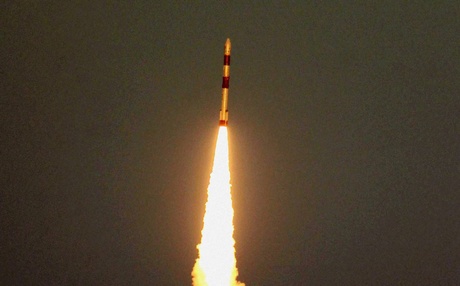
President Pranab Mukherjee and Andhra Pradesh chief minister Kiran Kumar Reddy were among those who witnessed the launch at the Satish Dhawan Space Centre at Sriharikota, 100km north of Chennai. The 44.4m PSLV carrying a payload weighing 668.5kg lifted off from the launch pad at 6.01pm, five minutes later than the scheduled time of 5.56pm.
Saral, built by Isro, would study the ocean surface and environment using two French devices — ARgos and ALtila, based on the principle of radar. The other satellites riding piggyback are two micro-satellites UniBRITE and BRITE from Austria and AAUSAT3 from Denmark and STRaND from the UK, besides a microsatellite (NEOSSat) and a mini satellite (SAPPHIRE) from Canada. Isro had postponed the SARAL launch from December last year after it detected some technical inconsistencies.
